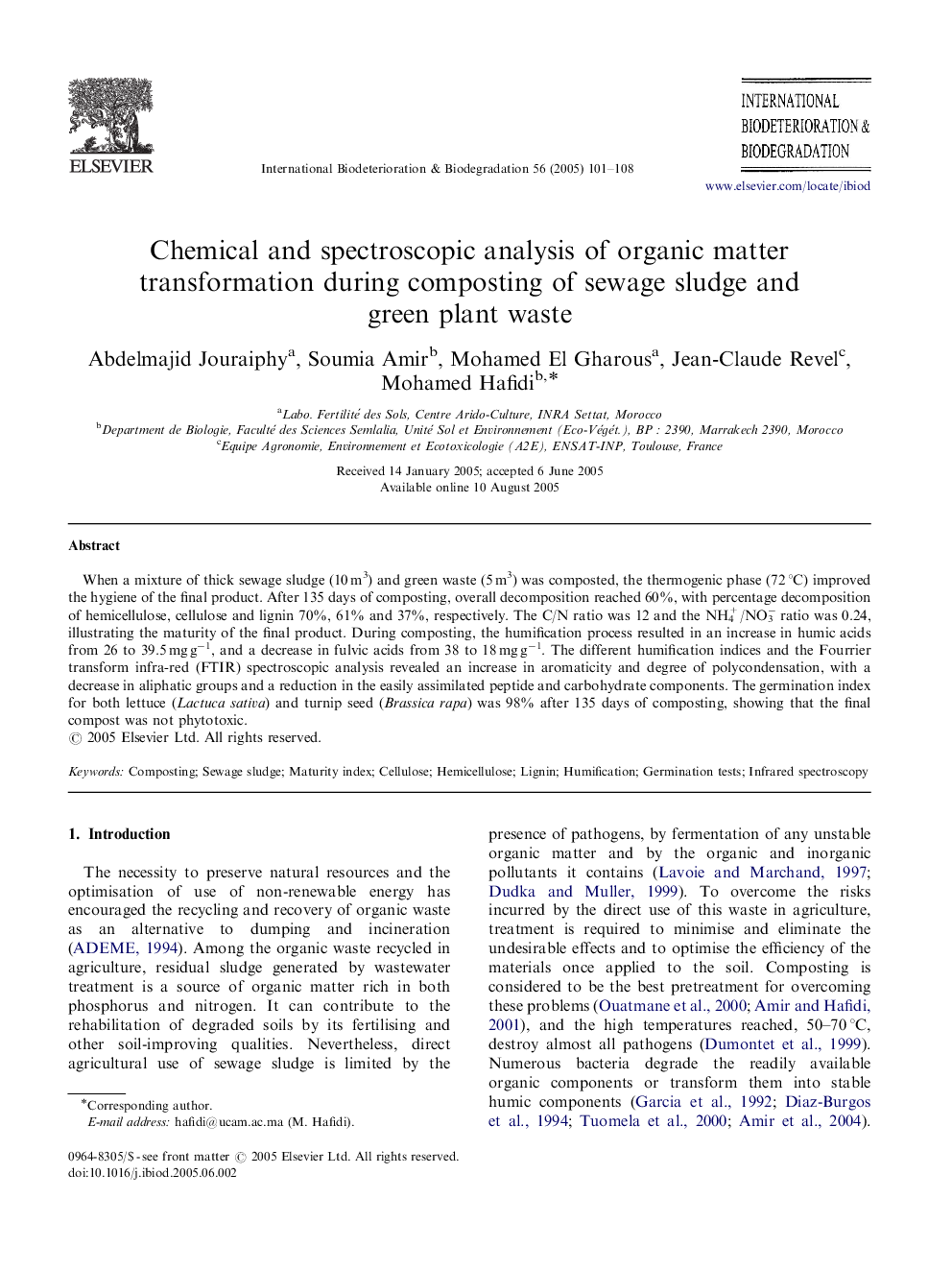| Article ID | Journal | Published Year | Pages | File Type |
|---|---|---|---|---|
| 9442402 | International Biodeterioration & Biodegradation | 2005 | 8 Pages |
Abstract
When a mixture of thick sewage sludge (10 m3) and green waste (5 m3) was composted, the thermogenic phase (72 °C) improved the hygiene of the final product. After 135 days of composting, overall decomposition reached 60%, with percentage decomposition of hemicellulose, cellulose and lignin 70%, 61% and 37%, respectively. The C/N ratio was 12 and the NH4+/NO3â ratio was 0.24, illustrating the maturity of the final product. During composting, the humification process resulted in an increase in humic acids from 26 to 39.5 mg gâ1, and a decrease in fulvic acids from 38 to 18 mg gâ1. The different humification indices and the Fourrier transform infra-red (FTIR) spectroscopic analysis revealed an increase in aromaticity and degree of polycondensation, with a decrease in aliphatic groups and a reduction in the easily assimilated peptide and carbohydrate components. The germination index for both lettuce (Lactuca sativa) and turnip seed (Brassica rapa) was 98% after 135 days of composting, showing that the final compost was not phytotoxic.
Keywords
Related Topics
Life Sciences
Environmental Science
Environmental Science (General)
Authors
Abdelmajid Jouraiphy, Soumia Amir, Mohamed El Gharous, Jean-Claude Revel, Mohamed Hafidi,
